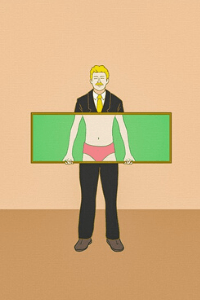Trans Care – How Physios Can Help
It’s PRIDE month! This is a movement that I have always found touching, and inspirational. Consider the immense challenges and barriers this community faces to just be themselves and LOVE whom they want to; and you begin to understand the depth of their courage. This is particularly true with the transgender population. As a Pelvic Health Physiotherapist, it is my honour to assist members of the community to overcome the challenges they have regarding pelvic health, readiness for and recovery from top and bottom surgeries, not to mention all the run of the mill things that happen to humans – like sprains and strains from living life.
 I want to talk about the specific ways that Pelvic Health Physiotherapists can help the Trans Qmunity for a couple of reasons that come back, as they usually do with me, to the cultivation of empathy for members of our community. Trans folx are at higher risk for sexual and physical traumas across all imaginable contexts. These are experiences that increase their likelihood of experiencing pain, movement and pelvic dysfunction. Trans folx are unlikely to report these incidences due to fear of systemic discrimination, which limits their opportunities for healing and recovery. These individuals deserve a good quality of life, free from physical pain, and able to enjoy their bodies fully. Physiotherapists are uniquely position to help Trans folx to reach the potential of their bodies, whether the ones they were born with or the ones they choose.
I want to talk about the specific ways that Pelvic Health Physiotherapists can help the Trans Qmunity for a couple of reasons that come back, as they usually do with me, to the cultivation of empathy for members of our community. Trans folx are at higher risk for sexual and physical traumas across all imaginable contexts. These are experiences that increase their likelihood of experiencing pain, movement and pelvic dysfunction. Trans folx are unlikely to report these incidences due to fear of systemic discrimination, which limits their opportunities for healing and recovery. These individuals deserve a good quality of life, free from physical pain, and able to enjoy their bodies fully. Physiotherapists are uniquely position to help Trans folx to reach the potential of their bodies, whether the ones they were born with or the ones they choose.
Right Here at Home
Being open to assisting this community to prepare for and recover from surgeries that they might choose to undergo is even more relevant in Vancouver, as in the Fall of 2019, the Gender Surgery Program began in BC. This saves folx from having to travel hundreds of kilometres away to Quebec and Ontario for surgical procedures. Often, they would have to return home to communities that were not equipped to provide them with adequate help for their post-op needs in these unique surgeries.
Transition Definitions
Not all trans people choose to change their appearance surgically. Some undergo a Social Transition by changing pronounds and names and informing their friends, family and colleagues. Medical transition can be mitigated for some by hormone therapies alone. Others seek the full surgical transition of top surgeries and bottom surgeries. These surgeries run the spectrum from fairly minor day surgeries with fairly rapid healing times to major procedures involving skin grafts, skin flaps, reorganization of anatomy, scars and months of healing.
Some dysfunctions can come from the consequences of “passing” for a different gender. This includes binding (using layers of cloth, or tight fitting garments to minimize the appearance of breasts), tucking (using special garments, or just tape, to held a penis and scrotum tucked back, between the butt cheeks) or wearing a gaff (a garment worn to simulated the bulge from a penis). Binding can be so tight it creates breathing dysfunctions, thorax and rib pain. Improper tucking can result in obstruction of the urethra, that in turn can lead to urinary dysfunction and infections of the bladder and kidneys, not to mention pain. A gaff, due to its position between the legs, may encourage overactivity in the adductor muscles of the thighs. Sometimes urinary dysfunctions arise because a trans person is reluctant to void in a urinal, or tries to void in a urinal in a manner that is not supportive of their anatomy. These are some of the ways that habits related to lifestyle may create pain and dysfunction.
It’s a Journey. Let’s Go Together
 Trans folx have to meet a list of criteria to have the surgical procedures that result in changing their physical appearance to match that of their gender identity. If a person has made it to the surgical suite, it is after a long journey; with much reflection, collaboration and planning. After the surgery, the journey continues until fully healed and adjusted to the world in their newly transformed bodies. Is it any surprise that many who have undergone surgeries describe a feeling of intense relief to wake up in their new body?
Trans folx have to meet a list of criteria to have the surgical procedures that result in changing their physical appearance to match that of their gender identity. If a person has made it to the surgical suite, it is after a long journey; with much reflection, collaboration and planning. After the surgery, the journey continues until fully healed and adjusted to the world in their newly transformed bodies. Is it any surprise that many who have undergone surgeries describe a feeling of intense relief to wake up in their new body?
Top surgeries include Chest Feminization, Chest Masculinization, facial alteration and laryngeal alteration. Bottom surgeries included metoidioplasty (the creation of a small phallus using an enlarged clitoris), phalloplasty (the creation of a penis and scrotum to replace a vulva and vagina) and vaginoplasty (the creation of a vagina and vulva in place of a penis).
Physiotherapists are helpful pre-operatively to optimize breathing patterns, rib mobility, diaphragm and pelvic floor coordination, pelvic floor capacity including: strength, endurance, mobility and most importantly the ability to relax. We optimize strength and mobility of the surrounding regions of the lumbar spine, hips and shoulders. We address bladder function, voiding postures and address constipation. We ensure tissue mobility in the regions that will be utilized and changed during the surgeries. Healthy tissue to start with creates a better result afterward. We discuss the goals of the surgery, in particular, if they desire to have penetrative intercourse.
 Post-operatively, in all surgeries we are instrumental in scar care, including mobilization and management. Vaginoplasty, for example, involves much reorganization of tissue, and with this come extensive scars. Phalloplasty involves skin grafts – again necessitating a graft healing site, a tissue flap and extensive scars. IN the case of vaginoplasty, the crucial role of the physiotherapy is with teaching and managing dilation practices. The new vagina wants to go back to its original shape and location. Dilation, three times a day for 15 minutes, with gradually larger and larger dilators, is key for the success of the procedure. This healing takes months, and some dilation practice will occur for the rest of this individual’s life.
Post-operatively, in all surgeries we are instrumental in scar care, including mobilization and management. Vaginoplasty, for example, involves much reorganization of tissue, and with this come extensive scars. Phalloplasty involves skin grafts – again necessitating a graft healing site, a tissue flap and extensive scars. IN the case of vaginoplasty, the crucial role of the physiotherapy is with teaching and managing dilation practices. The new vagina wants to go back to its original shape and location. Dilation, three times a day for 15 minutes, with gradually larger and larger dilators, is key for the success of the procedure. This healing takes months, and some dilation practice will occur for the rest of this individual’s life.
All of this might sound strange, but these surgeries can result in bodies that can have sexually satisfying, penetrative intercourse. If you think about it like a pelvic health physio does, that is truly a medical miracle and proof of our bodies’ ability to adapt and recover!
Here is a the Vancouver resource that will get you connected if you are Trans and curious about a medical transition, or need to know more about safe tucking and binding practices. Transcare BC
If you are interested in a Pelvic Health Physio in your neighbourhood, visit the Physiotherapy Association of BC, and use their “Find a Physio” function. Outside of BC, contact your regions’ Physiotherapy Association for lists of Pelvic Floor Physiotherapists.
 About Gillian McCormick
About Gillian McCormick
Gillian is a Pelvic Health Physiotherapist passionate about elevating homo-sapiens through rehabilitation, education and love. She is honoured to live, work and play in North Vancouver, BC. She is the Co-Host of the Small Conversations for a Better World Podcast, and an advocate for Clean Beauty. Follow Gillian @physiogillian on Social Media. Physiogillian.com
If you’d like to read more by Gillian McCormick, check out other articles she’s written for Moving Spirit: Pelvic Organ Prolapse, Mature Women’s Health: There’s So Much More To Talk About and more!
